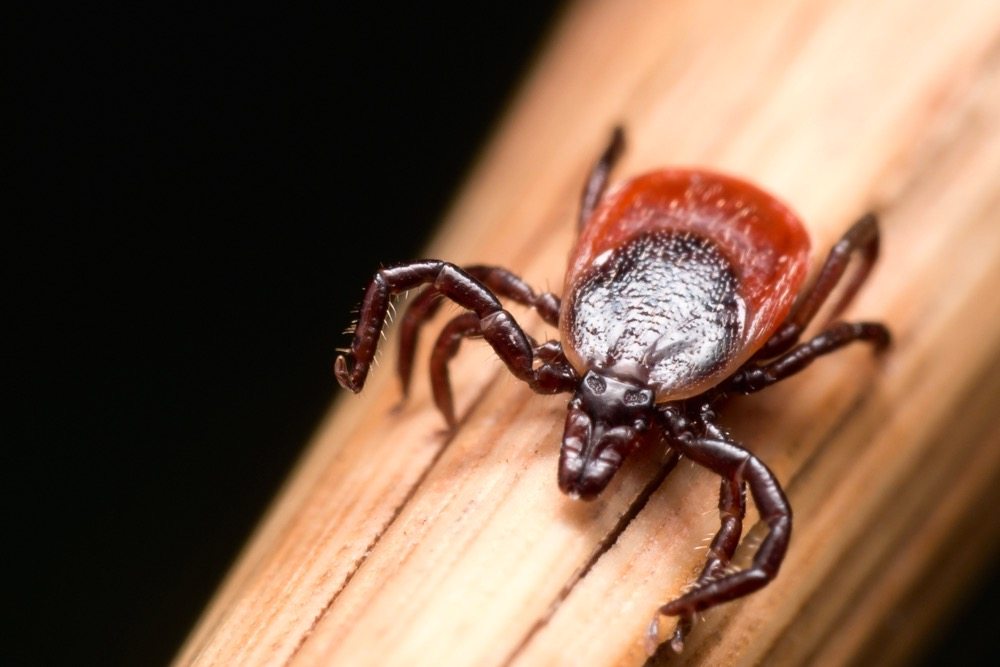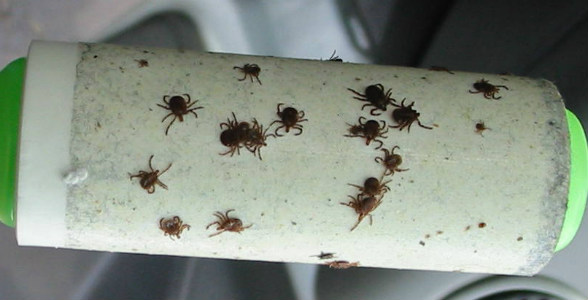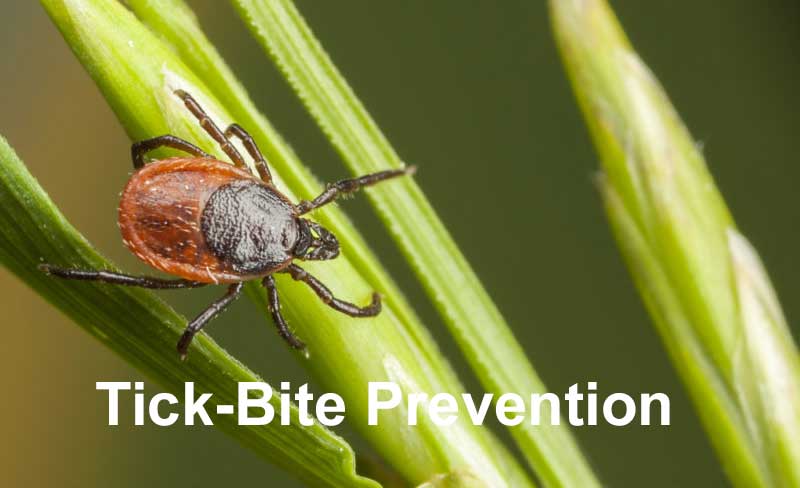When the winter is over and summertime is just around the corner, our thoughts often turn to the great outdoors. We think about spending long, lazy days outdoors with family and friends or simply sitting out in the sun and enjoying the warmth for a change. There is no doubt that summer can be fantastic but it is also a time of year for caution. After all, summer is when ticks become a problem.
The last thing that you want is to be bitten by a tick and run the risk of getting sick. Even if you don’t get sick, they are still an unwelcome addition to your body. In this article, we will discuss the different ticks that may be in your area, where they live, the diseases that they carry, and what you can do to eliminate the issue.
What Is a Tick?
Over 800 species of ticks are found throughout the world but there are only a few that will bite humans and have the possibility of transmitting disease. Ticks are not insects, they are arachnid and they are not a newcomer to the planet. They have turned up in fossils that are thought to be at least 90 million years old.
Ticks go through various cycles in their life, including egg, larva, nymph and adult male or female. As they move through the larva, nymph and adult stage, they will feed on mammals (including humans) and fill up on blood. They will then drop off, go into hiding, molt and then come back out for another blood meal.
Larva: Tick larva are extremely small and only have six legs. They can be as small as the period at the end of the sentence.
Nymph: During the nymph stage, ticks can be up to 1/8 inch and they have eight legs.
Adults: Adult ticks that bite humans and transmit disease are either classified as soft ticks (Argasidae) or hard ticks (Ixodidae). They can be up to 1/4 inch long and have eight legs.

Deer Tick
Where Do Ticks Live?
Before we talk about tick habitat, it’s important to dispel a myth that has been around for generations. Ticks do not climb trees or to any other high location and drop-down on humans as a method of attack. Quite simply, they stay near ground level, typically on grass or weeds between ankle and knee high. They wait in that area for you to walk by and if you come in contact with them, they climb aboard, climb up and find a place to attach themselves.
Ticks tend to hang out in moist, shady areas. You can find them in a patch of weeds, in the woods, in your garden and even in the middle of your lawn. They are especially prevalent, however, along the edges of woods and near older structures, such as stone walls.
If you find that you are in prime tick habitat, it’s important to take preventative action. If you take the right precautions, you can practically eliminate the possibility that they will attach to your skin or even get on your clothing in the first place.
What Are the Different Types of Ticks?
According to the CDC, there are at least 8 different species of ticks in the United States that bite humans and have the potential for transmitting disease. Those ticks include the following.
Black Legged Tick (Deer Tick) – This is perhaps one of the most feared ticks in the United States. It is found in the Eastern and Northern Midwestern United States as well as in southeast Canada. It is commonly found outdoors during warmer weather seasons but they can be active anytime the temperature gets above freezing.
Diseases – Multiple diseases including Lyme disease
American Dog Tick (Wood Tick) – Found from the eastern United States to the east side of the Rocky Mountain and on the West Coast in California. The American dog tick is typically found in grassy fields and scrubland where there is little tree cover.
Diseases – Rocky Mountain Spotted Fever and Tularemia
Gulf Coast Tick – Found along the Atlantic coast in the southeast United States and along the Gulf of Mexico. They commonly feed on deer but they can attach to humans.
Diseases – A form of spotted fever.
Rocky Mountain Wood Tick – Found in the Rocky Mountain states at elevations between 4000-10,500 feet.
Diseases – Colorado tick fever and Rocky Mountain spotted fever
Brown Dog Tick – Found in every state in the United States as well as in many other areas throughout the world. They tend to attach to dogs during their adult life but they can also attach to humans and other animals.
Diseases – Rocky Mountain spotted fever in the southwestern US
Lone Star Tick – Found along the East Coast, through the Midwest, and in the southeastern United States. This is an aggressive species of tick that bites humans. You can identify the female Lone Star tick by the white dot on her back.
Diseases – Heartland Virus and STARI
Western Blacklegged Tick – Found along the United States Pacific Coast but prevalent in northern California. Although they can attach to humans, the rates of infection are typically low.
Diseases – Lyme disease and Anaplasmosis
What Are Tickborne Diseases?
There are many who believe that ticks are automatically infected with the bacteria, viruses, and parasites that they pass on to humans (tick-borne diseases). In reality, they themselves are infected from host animals and then pass them on to the next animal they bite.
There are many tickborne pathogens that can be passed on to humans through the bite of an infected tick. The following are some of the more common diseases, some of which are quite serious.
Lyme disease – With more than 22,000 confirmed cases in 2010 alone, this is a very serious issue. It is most prevalent in the Midwest and the Northeast United States. Not all ticks carry Lyme disease but those that do are thought to transmit it within 24 hours after attaching to the skin.
The first symptom of Lyme disease is typically a localized (bulls-eye) rash. As the infection progresses, it can lead to chills, headaches, fever, muscle stiffness and joint stiffness. More serious symptoms can include an irregular heartbeat, facial paralysis, memory loss, and dizziness.
Rocky Mountain Spotted Fever – This is actually a group of spotted fever diseases that are caused by bacteria and passed on to humans from several different types of ticks. The symptoms can include a headache, fever, and rash. It needs to be treated with an antibiotic and it can be deadly if it is not treated properly.
Anaplasmosis – More than 4000 people suffered from this disease in a recent year and it has been steadily on the rise. The symptoms typically appear within two weeks after the bite occurs and can include headaches, chills, muscle aches, and fever.
Ehrlichiosis – There are a number of bacterial diseases that fall under this description. They can be transmitted from the Lone Star tick to humans and animals. The symptoms show up approximately two weeks after the tick bite and can include headaches, fatigue, fever and muscle aches.
Babesiosis – This disease is most common in the northeastern and upper Midwest United States. It is a microscopic parasite that can infect the red blood cells in the body. Individuals who are infected will not typically have symptoms but if there are symptoms, treatment options are available.
Tularemia – Humans can become infected through the bite of the tick or a deer fly. It can also be transmitted through contact with infected animals, inhaling contaminated aerosol or agricultural dust and drinking contaminated water. This disease can be life-threatening but there are also treatments available using antibiotics.
How to Treat a Tick Bite
If you have been bitten by a tick, don’t feel as if you are automatically going to come down with a tickborne disease. Many diseases take some time to transmit. Even Lyme disease will not typically occur unless the tick is attached to the skin for a minimum of 24 hours. That being said, you need to treat the problem promptly and properly.
Step 1: Remove the Tick – It is important to remove the tick immediately after it is found. You also need to remove it properly or you run the risk of causing further harm.
The tick should be grasped as close to the skin as possible with a pair of tweezers or, if tweezers are not available, with your fingers (wear gloves). Gently and steadily pull away until the tick backs out on its own. If any mouthparts remain, they will be pushed out by the skin naturally.
DO NOT cover the tick with petroleum jelly or touch it with a hot match. The tick may regurgitate under your skin and transmit disease immediately.
Keep the tick in a container to show the doctor.
Step 2: Cleanse the Area – Wash the area and your hands with warm, soapy water. Apply alcohol directly to the area where the tick was embedded to help prevent action.
Step 3: See a Doctor – If the tick was not able to be removed successfully or completely you should see a doctor right away. You should also talk to a doctor if you think it may have been a deer tick or if a bulls-eye rash appears in the area of the bite.
Other issues to watch for include flu-like symptoms within 1 month after you have been bitten. This could include nausea, vomiting, headaches, fever, rash and muscle aches. You should also watch for any lesions that appear in the bite area within 30 days or if signs of an infection occur.
How to Prevent Tick Bites
The first, and best way to handle ticks is to prevent them from attaching to your skin in the first place. If you are able to avoid areas where ticks tend to hang out, you can avoid much of the problem. If you need to be in an area where ticks tend to be an issue, the following can help reduce the likelihood that they will get on your skin.
Use a Repellent – One of the most effective ways to avoid tick bites is to wear tick repellent clothing. It is possible to send off your clothing and have it treated commercially and professionally with an odorless, invisible, EPA registered repellent (permethrin). This type of treatment will last for up to 70 washes, so it certainly would last for a few seasons.
If you don’t want to go through the time and expense to have your clothes treated professionally, you can spray them with an insect repellent that contains permethrin. If it is used properly, it will work well, not only for ticks but also mosquitoes and black flies. It does not have a harmful effect on humans if it is used according to directions.
Tuck in Your Pants Legs – Since ticks tend to hitch a ride in the area of the ankles to the knees and climb upward, tucking your pants legs into your socks gives you a greater opportunity to find them before they get under your clothing.
Check for Ticks Regularly – Give your children and your pets, as well as yourself a daily tick check. It takes a little practice but you will get quite efficient at finding them. Make sure that you remove them promptly, carefully and properly.
Wear Light-Colored Clothing – This is a fairly common suggestion but it is often misunderstood. Light-colored clothing will not keep the ticks from hitching a ride but it does make them easier to detect. According to some studies, however, ticks may be attracted to lighter color clothing, so this suggestion could be a wash. Use at your own discretion.
Natural Treatments As Tick Repellents
Many people don’t want to use permethrin as a tick repellent. After all, it is a pesticide and, although it doesn’t have any negative side effects when used properly, you may want to avoid putting it on your skin or clothing.
There are some options for natural tick repellents that can go a long way in helping you to avoid the issue. Here are 2 options that can go a long way in helping you to remain tick free.
Use a Lint Roller – Carry a lint roller with you, either on your person or in your car. Roll the roller over your clothing on a frequent basis and it will pick up the ticks quite effectively. Although it is still a good idea to check yourself visually on an ongoing basis, a lint roller can help to pick up the ticks you are not seeing, including those that are very small.

Essential Oils – There are a number of essential oils that may be able to help you remain tick free. Spraying them on your clothing or rubbing them on your skin may act as a natural barrier to keep ticks at bay. They can also work fantastic for black flies or mosquitoes.
If you are going to put any type of essential oil on your skin, make sure that you dilute it with a carrier oil, such as coconut oil. Some essential oils can be an irritant if they are applied full strength. You should also not mix-and-match essential oils unless you check for potential issues ahead of time.
These 5 essential oils are reported to repel bugs, including ticks:
1. Lavender: This smells sweet to us but bugs absolutely hate it. It works on mosquitoes, flies and other insects.
2. PennyRoyal: This is a member of the mint family and it is toxic to insects.
3. Lemongrass: This essential oil comes from tropical lemongrass and has a citrusy scent. It is a natural flea and tick repellent and can be sprayed directly on the skin.
4. Eucalyptus: Use this alone or along with citronella oil to keep bugs away. According to the Journal of medical entomology, Eucalyptus extract can reduce tick bites and infections.
5. Lemon: Some lemon essential oil can work against fleas and other bugs. Slightly dilute it and spray it on your clothing and skin.
In conclusion; go ahead and enjoy the summer. Spend time outdoors and take advantage of the warm weather while it is available. Just make sure that you do so smartly and take the necessary precautions to avoid ticks. In doing so, you can take full advantage of the great outdoors and not stress over the possibility for problems along the way.

